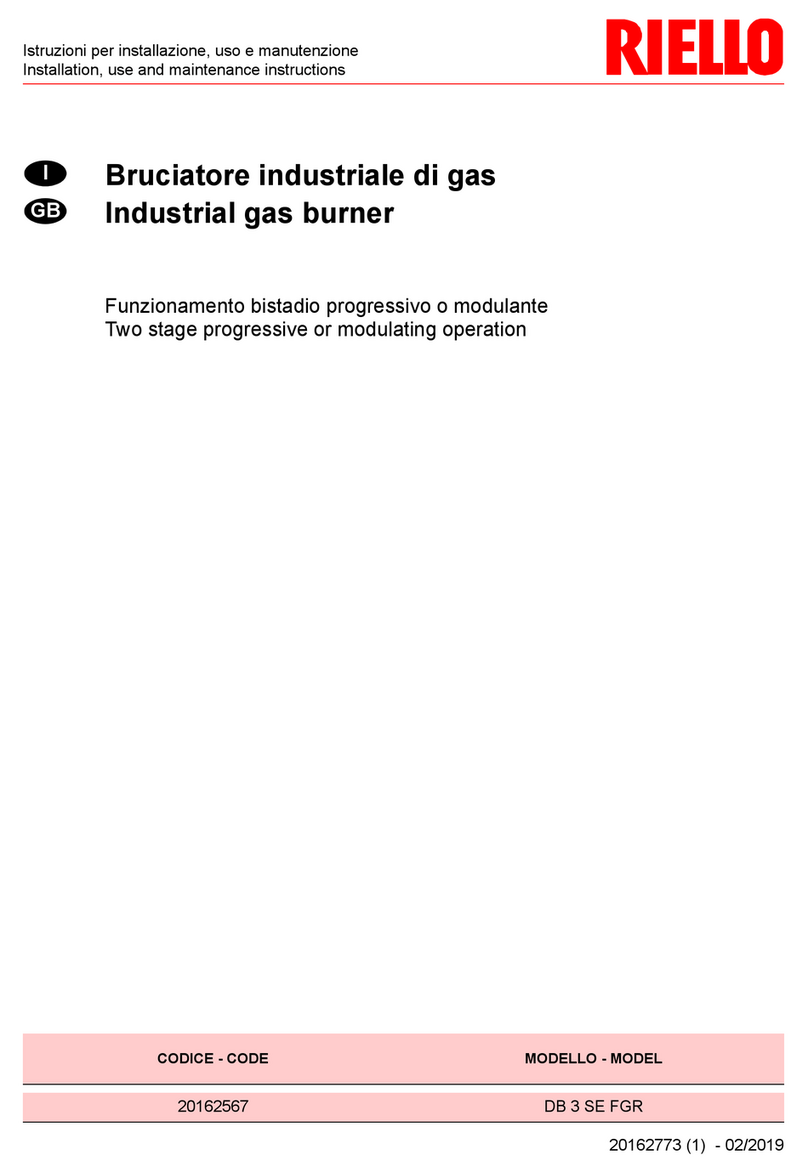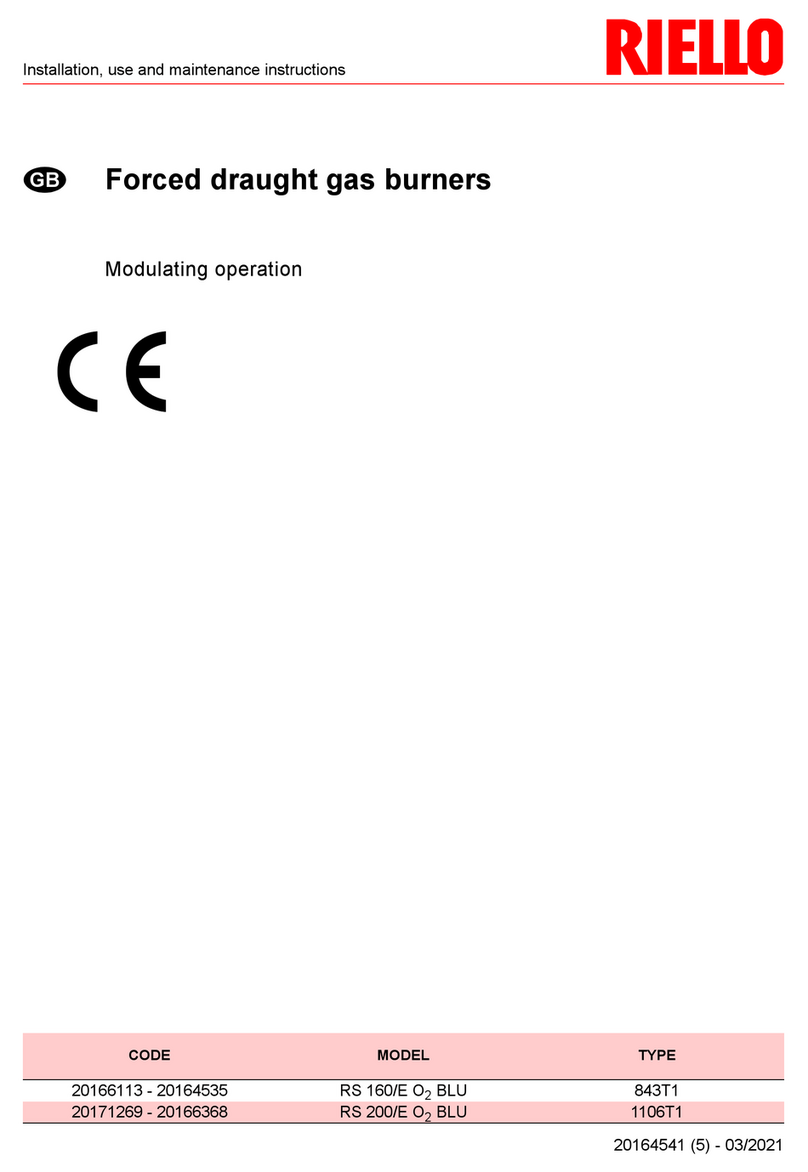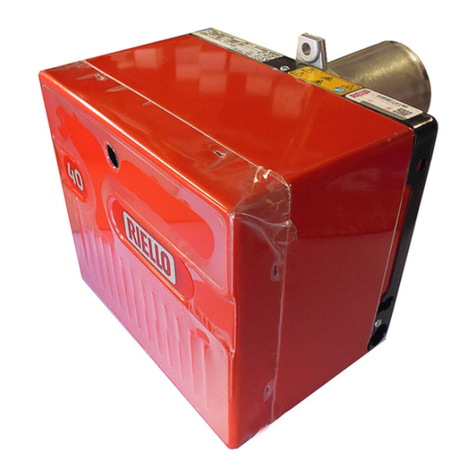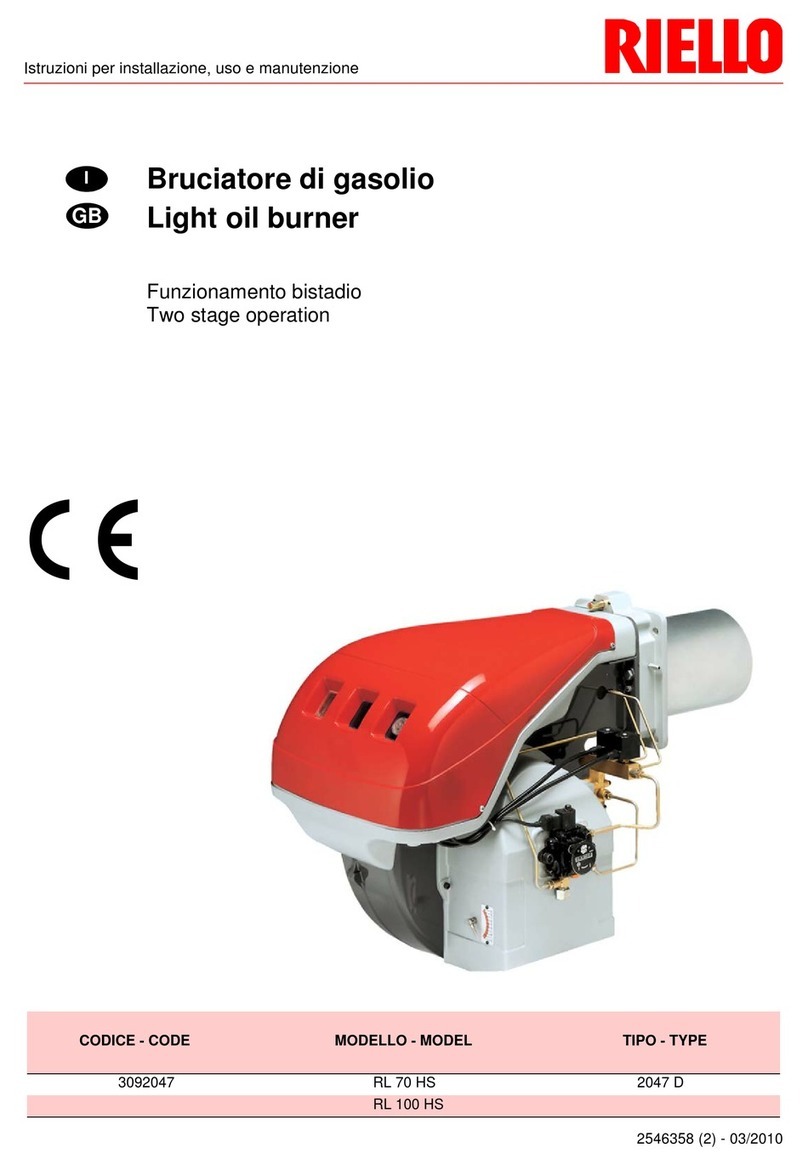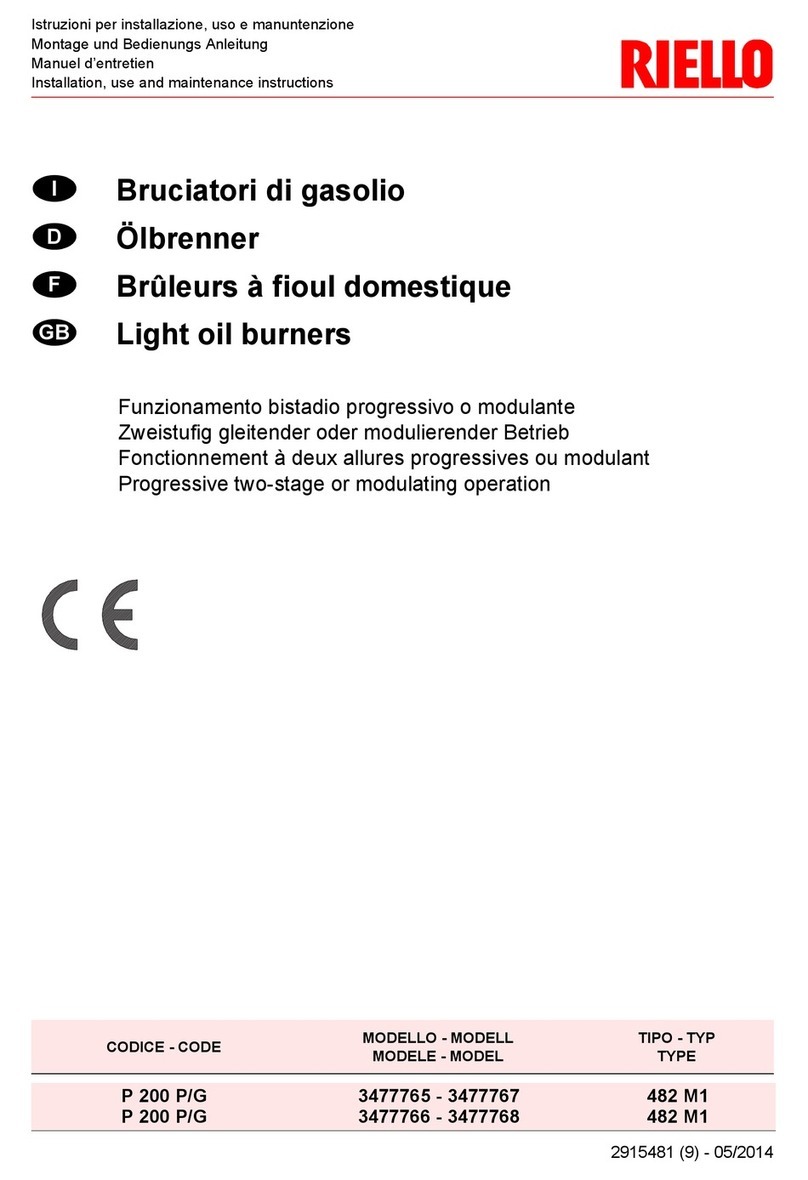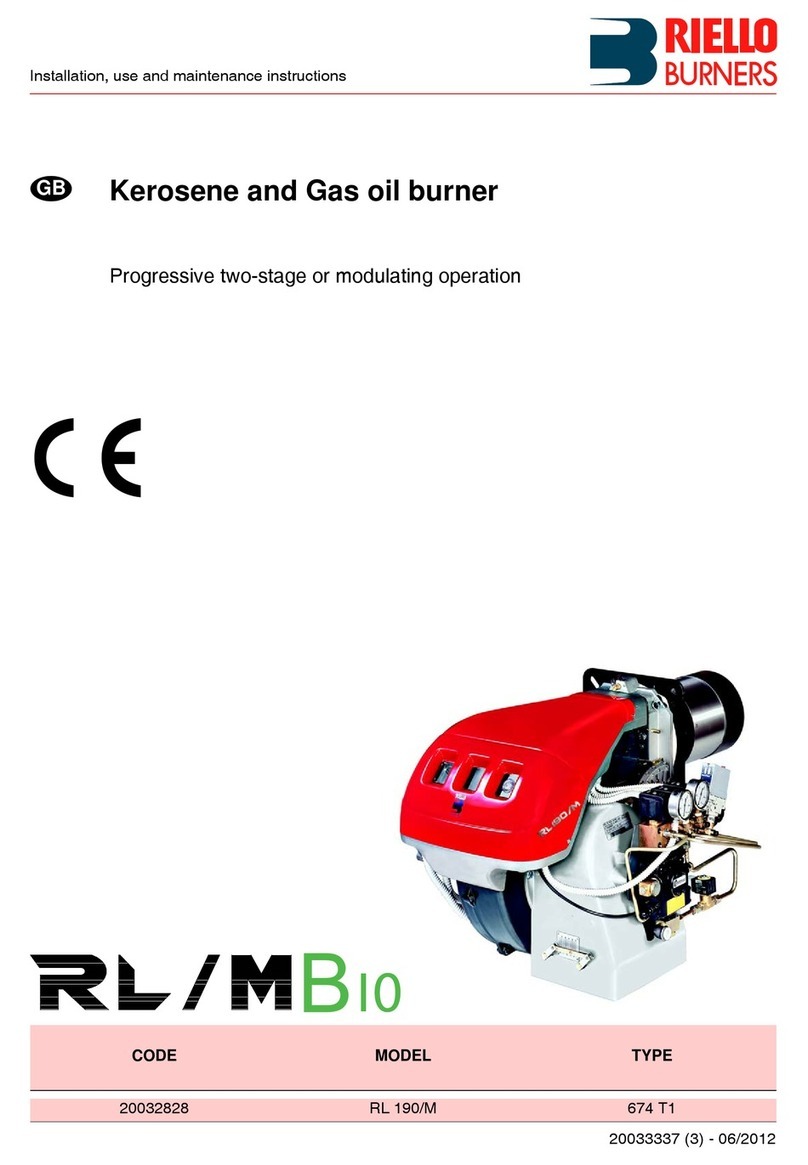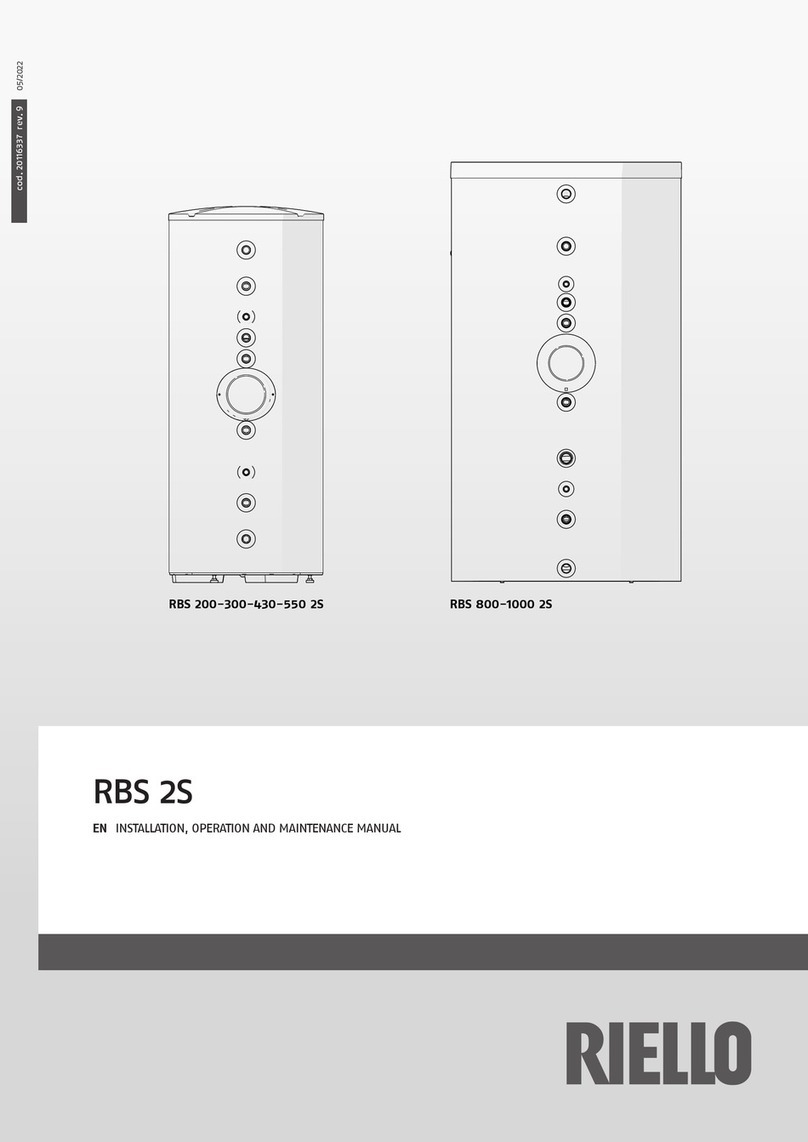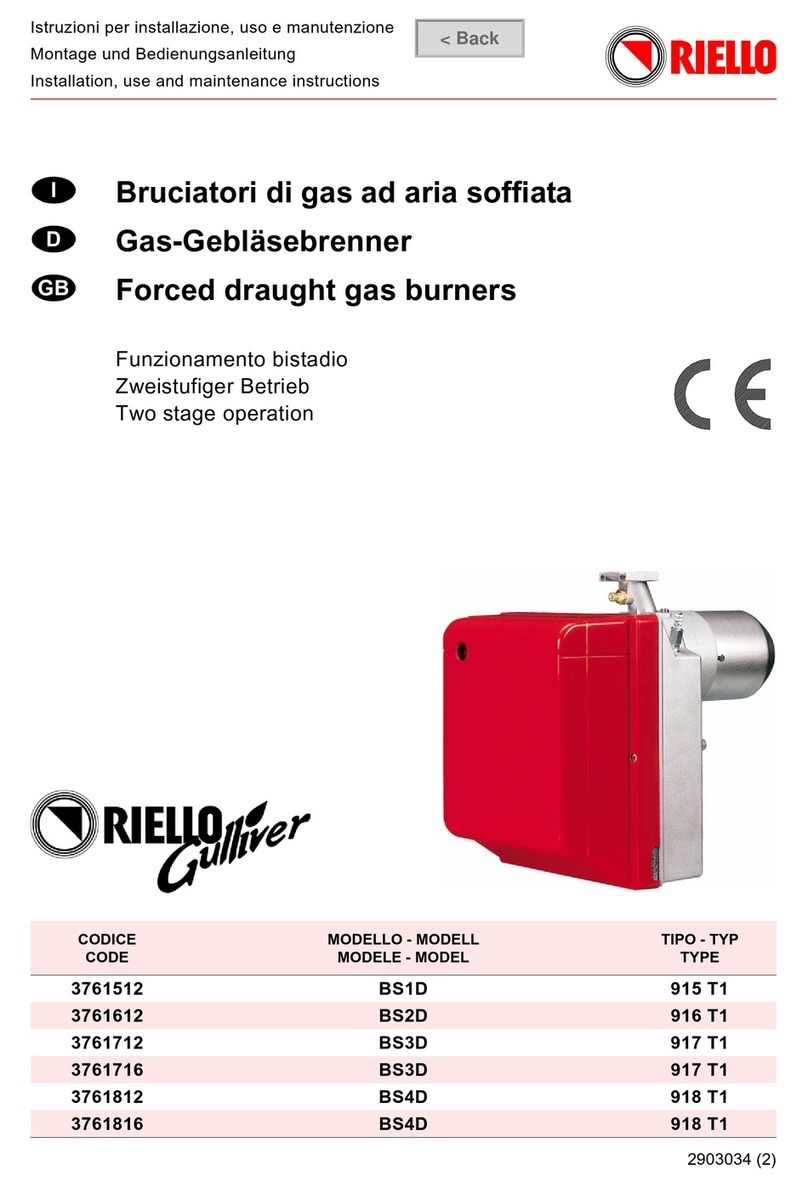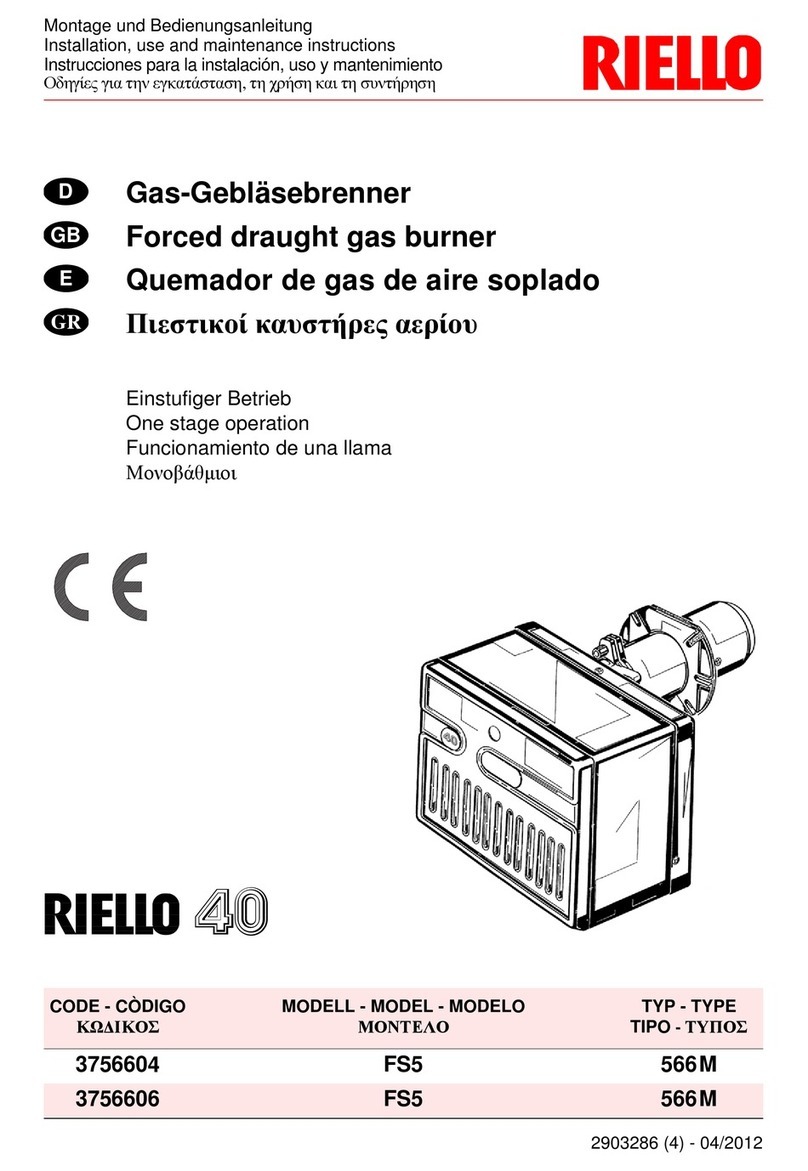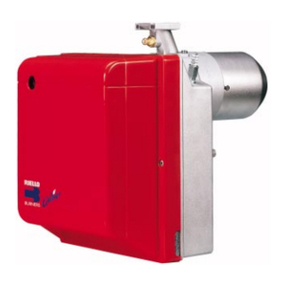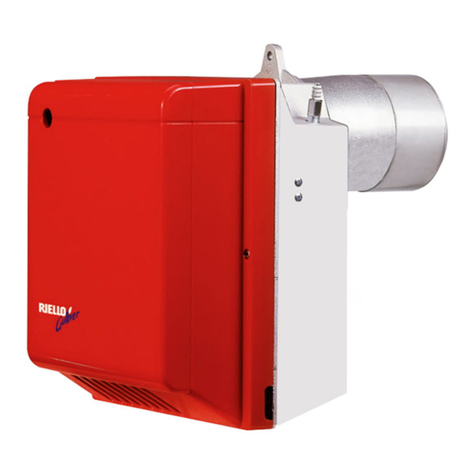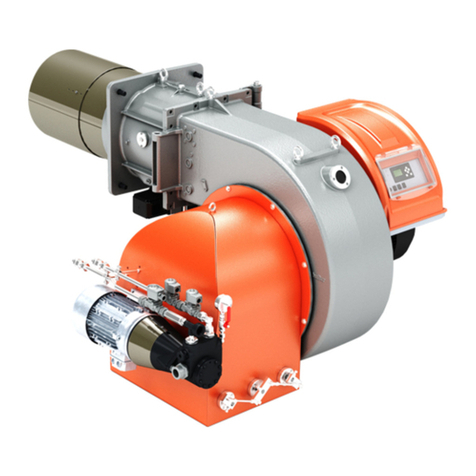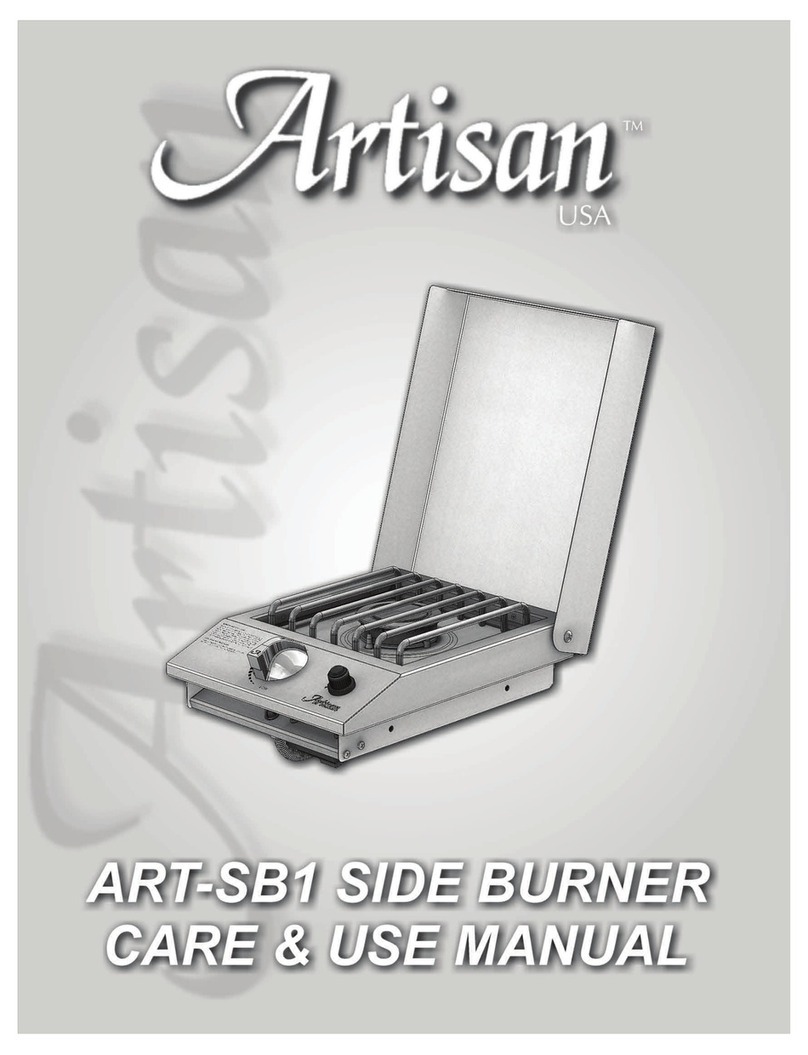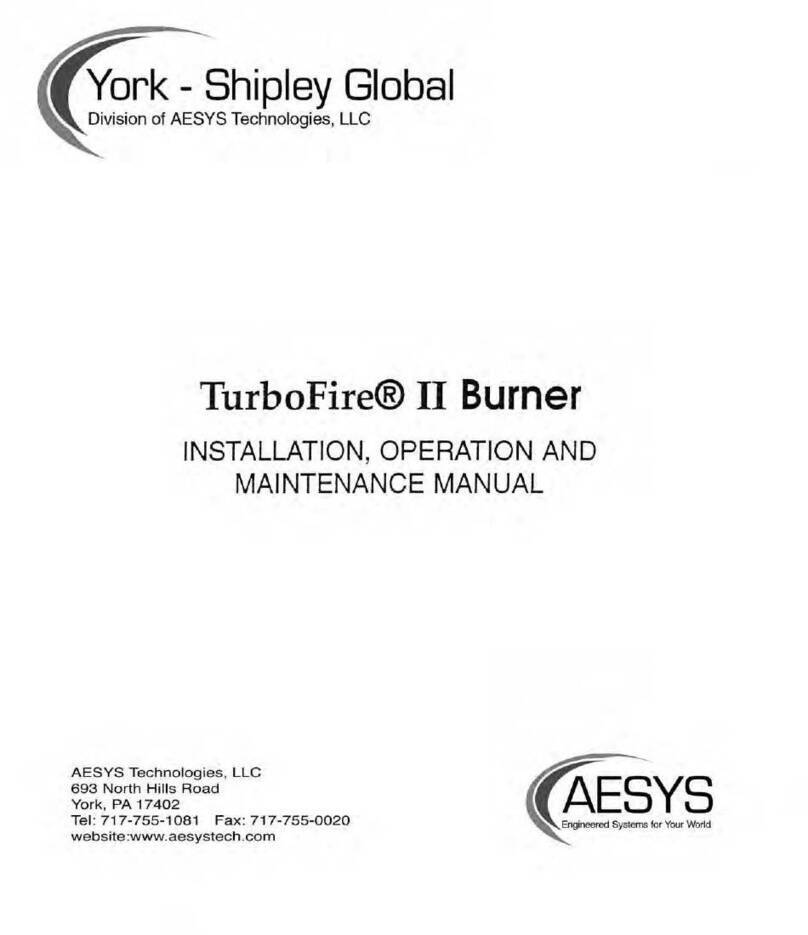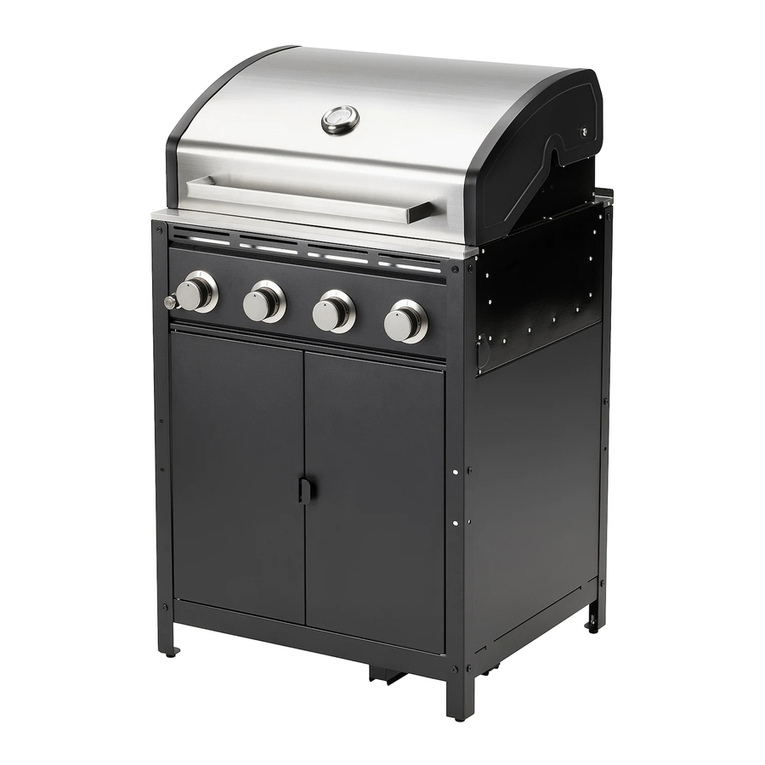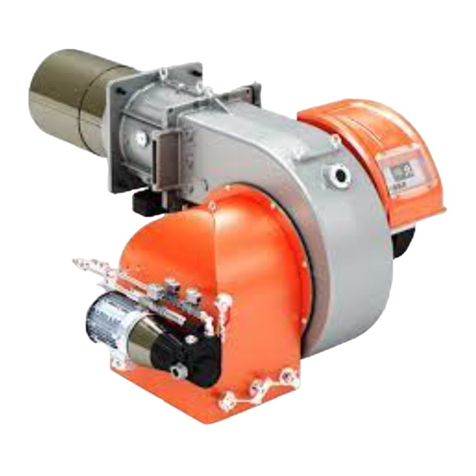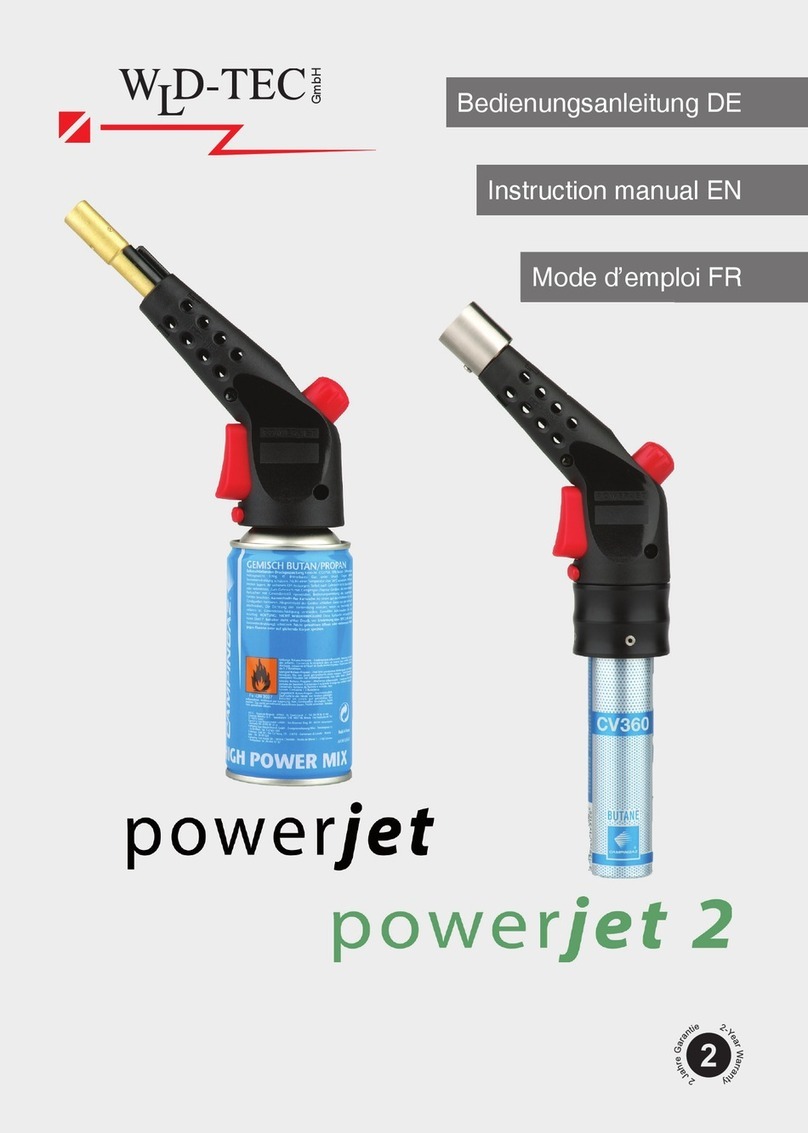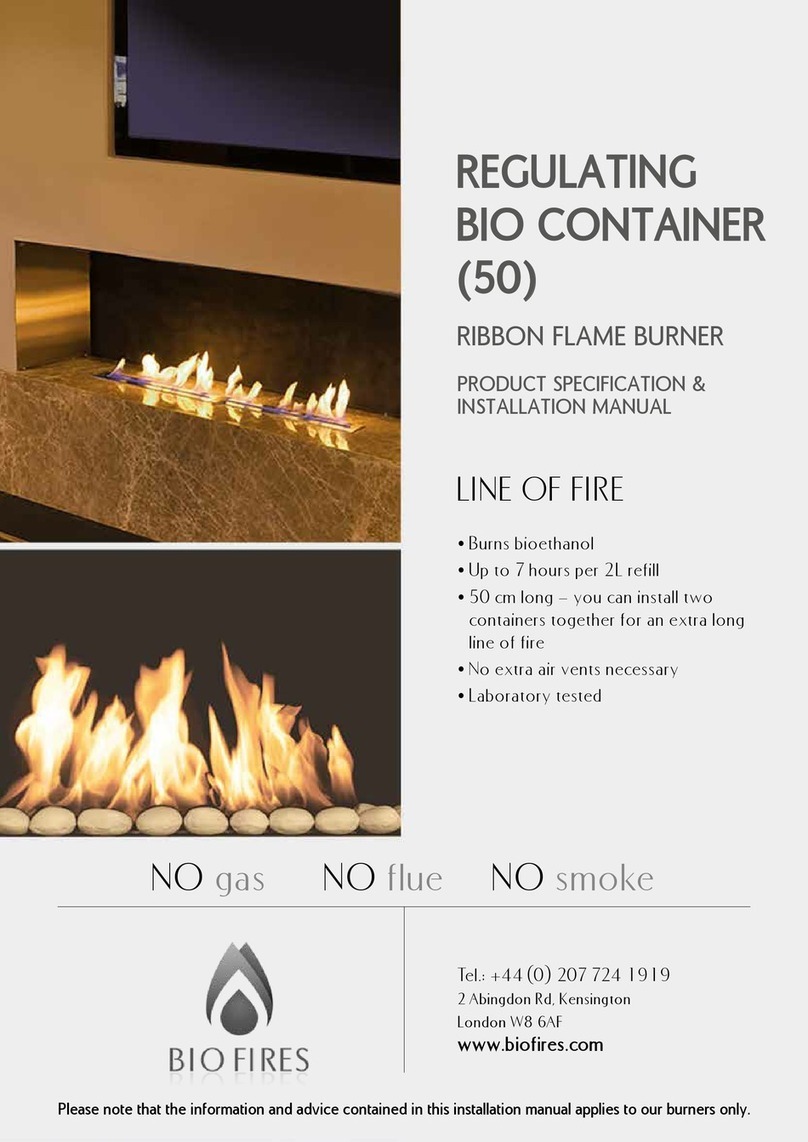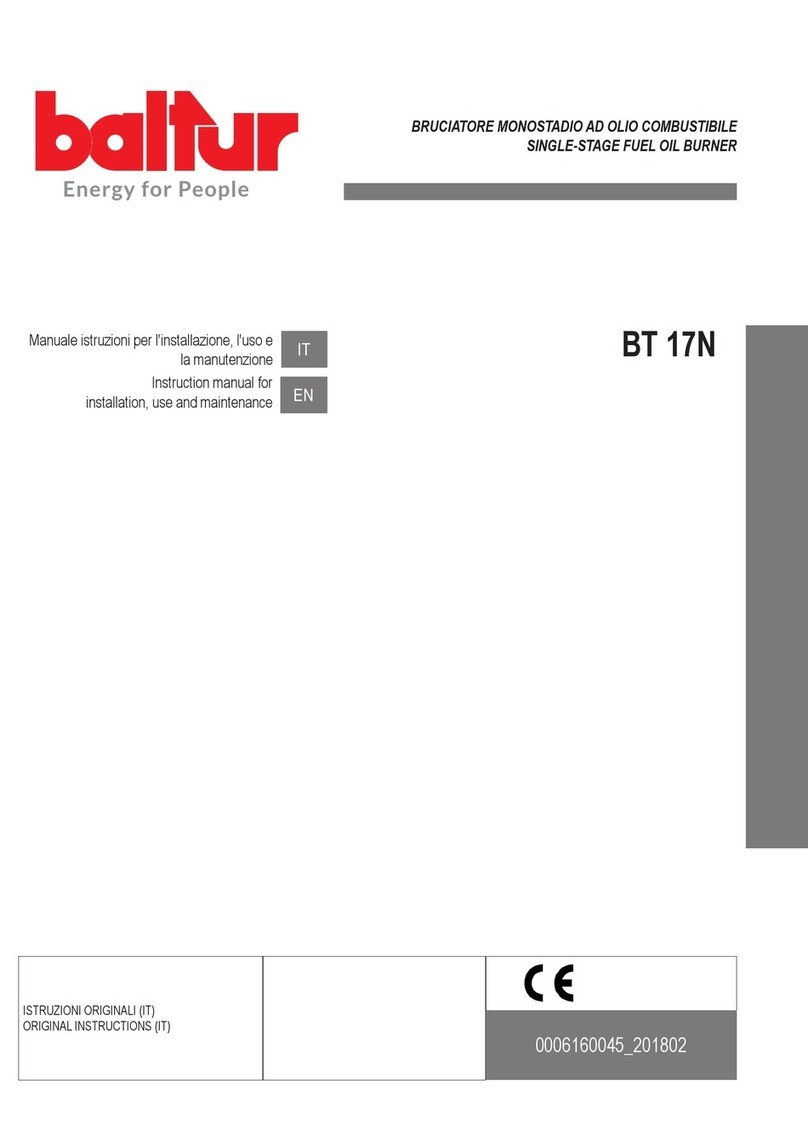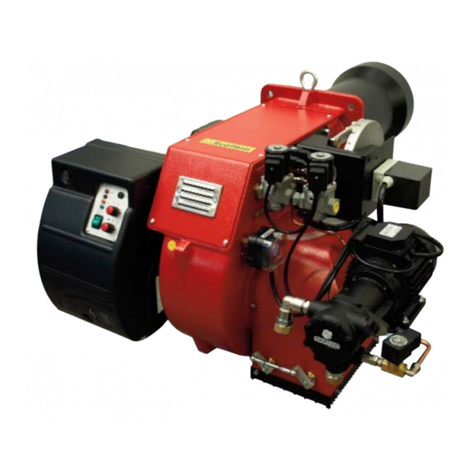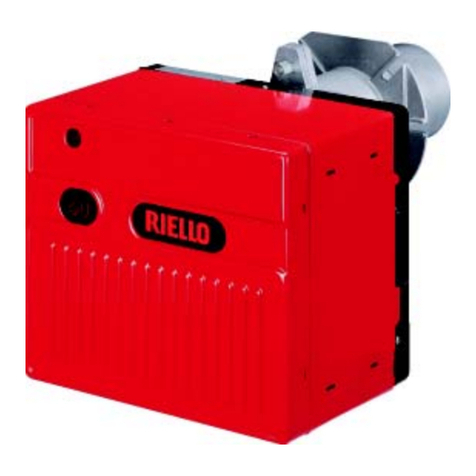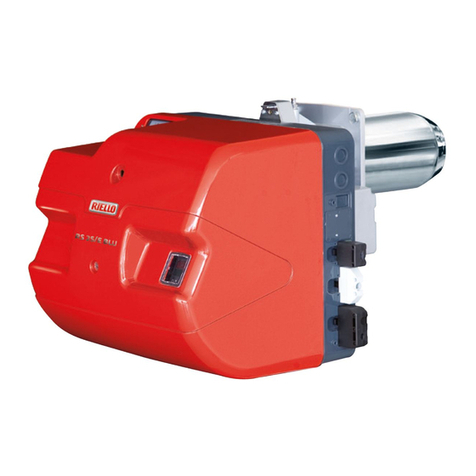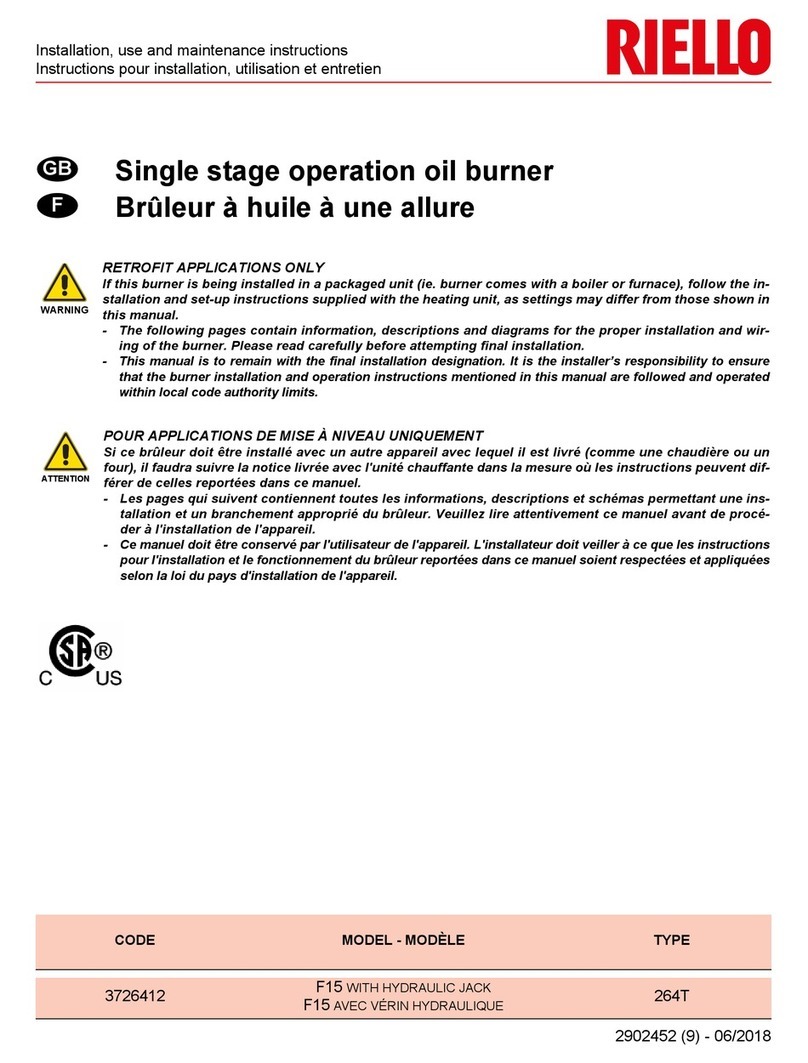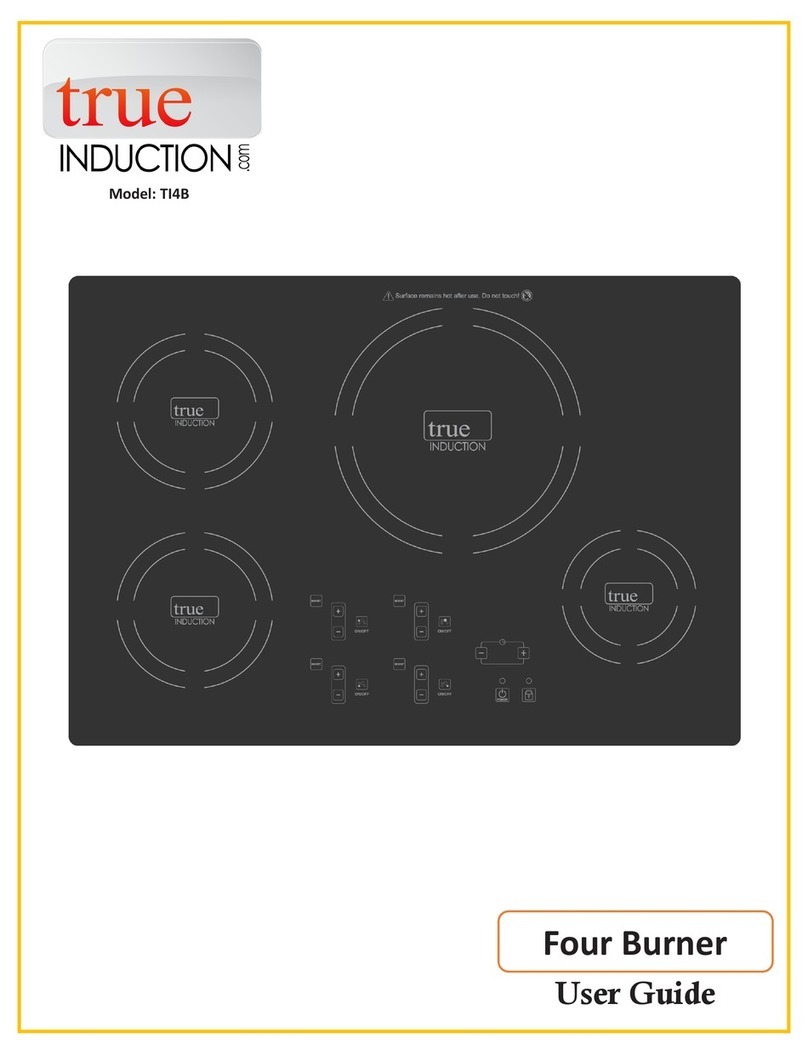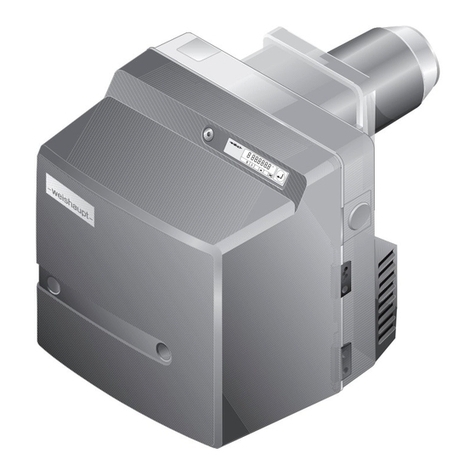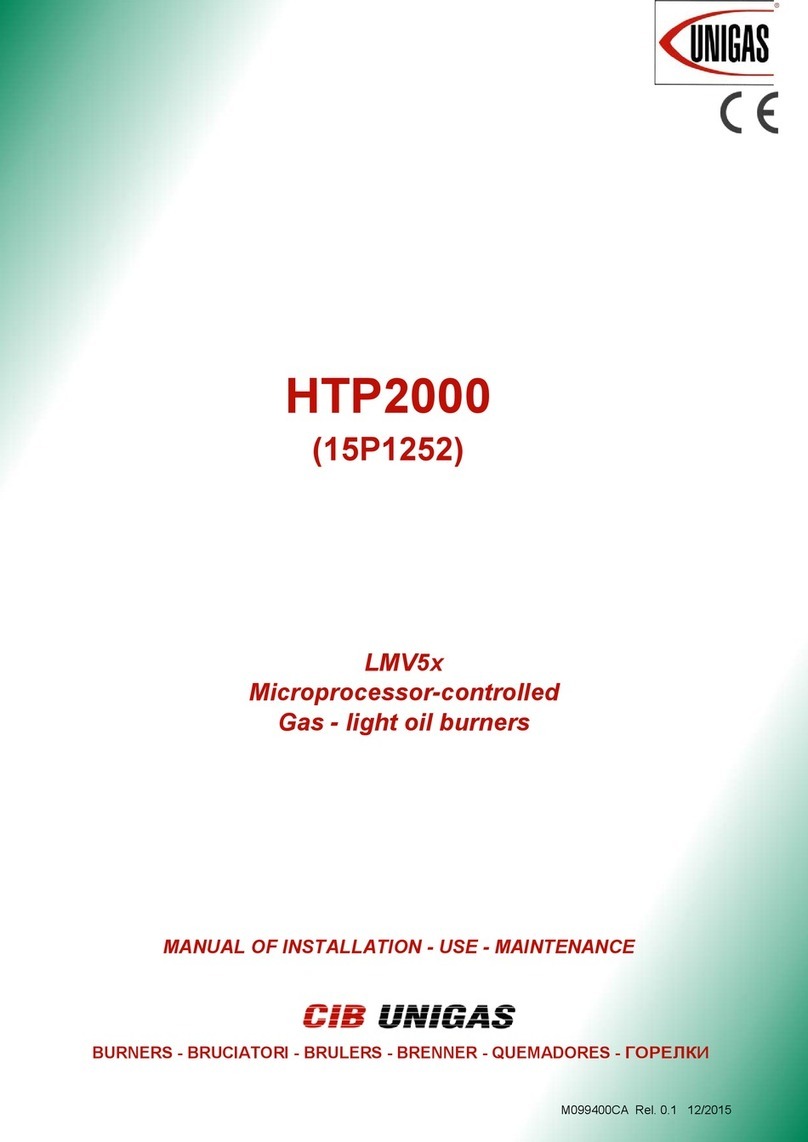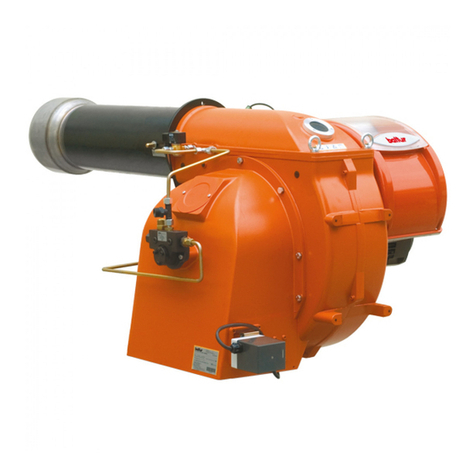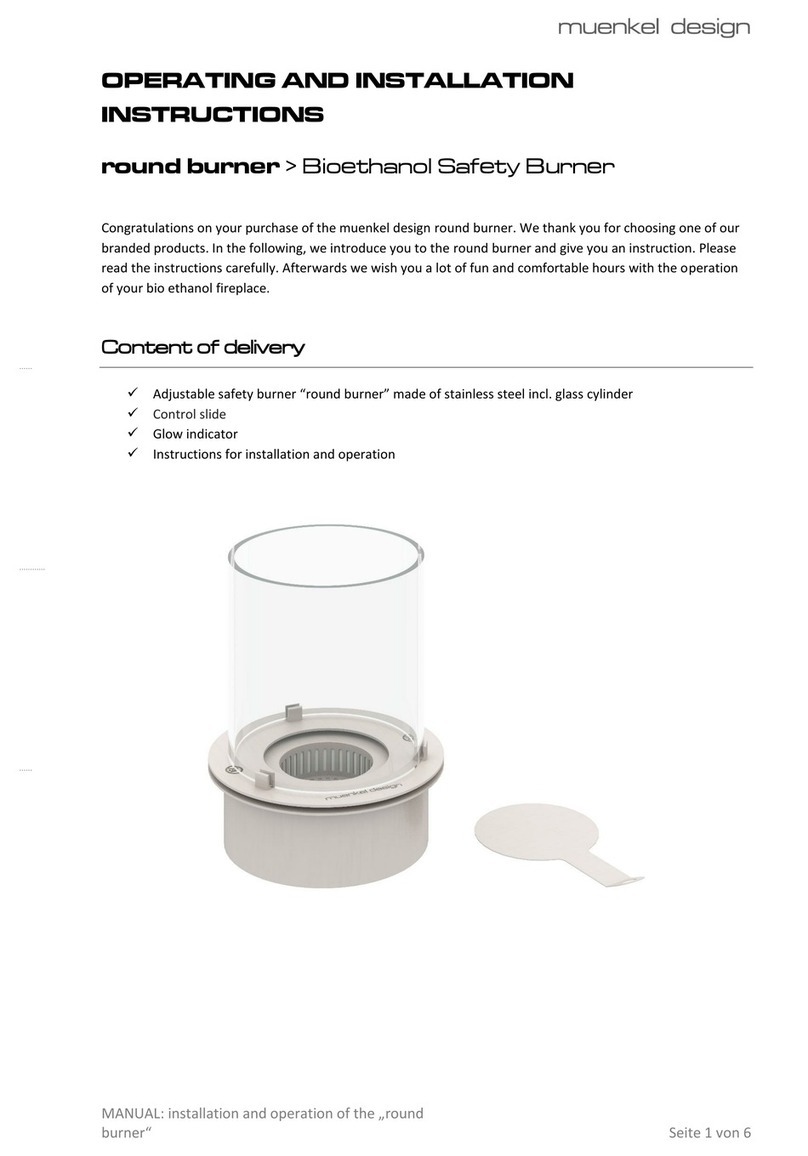
3
INDICE
DATI TECNICI . . . . . . . . . . . . . . . . . . . . . . . . . . . . . . . . . pagina 4
Dati elettrici. . . . . . . . . . . . . . . . . . . . . . . . . . . . . . . . . . . . . . . . . . 4
Descrizione bruciatore . . . . . . . . . . . . . . . . . . . . . . . . . . . . . . . . . 8
Imballo - Peso . . . . . . . . . . . . . . . . . . . . . . . . . . . . . . . . . . . . . . . 8
Ingombro . . . . . . . . . . . . . . . . . . . . . . . . . . . . . . . . . . . . . . . . . . . 8
Corredo . . . . . . . . . . . . . . . . . . . . . . . . . . . . . . . . . . . . . . . . . . . . 8
Campo di lavoro . . . . . . . . . . . . . . . . . . . . . . . . . . . . . . . . . . . . . 10
Caldaia di prova . . . . . . . . . . . . . . . . . . . . . . . . . . . . . . . . . . . . . 10
Caldaie commerciali. . . . . . . . . . . . . . . . . . . . . . . . . . . . . . . . . . 10
Pressione gas. . . . . . . . . . . . . . . . . . . . . . . . . . . . . . . . . . . . . . . 12
INSTALLAZIONE. . . . . . . . . . . . . . . . . . . . . . . . . . . . . . . . . . . . 14
Piastra caldaia . . . . . . . . . . . . . . . . . . . . . . . . . . . . . . . . . . . . . . 14
Lunghezza boccaglio . . . . . . . . . . . . . . . . . . . . . . . . . . . . . . . . . 14
Fissaggio del bruciatore alla caldaia . . . . . . . . . . . . . . . . . . . . . 14
Regolazione testa di combustione . . . . . . . . . . . . . . . . . . . . . . . 16
Linea alimentazione gas. . . . . . . . . . . . . . . . . . . . . . . . . . . . . . . 18
Impianto elettrico . . . . . . . . . . . . . . . . . . . . . . . . . . . . . . . . . . . . 20
Regolazioni prima dell’accensione. . . . . . . . . . . . . . . . . . . . . . . 26
Servomotore. . . . . . . . . . . . . . . . . . . . . . . . . . . . . . . . . . . . . . . . 26
Avviamento bruciatore . . . . . . . . . . . . . . . . . . . . . . . . . . . . . . . . 26
Accensione bruciatore . . . . . . . . . . . . . . . . . . . . . . . . . . . . . . . . 26
Regolazione bruciatore: . . . . . . . . . . . . . . . . . . . . . . . . . . . . . . . 28
1 - Potenza all’accensione . . . . . . . . . . . . . . . . . . . . . . . . . . . . . 28
2 - Potenza MAX . . . . . . . . . . . . . . . . . . . . . . . . . . . . . . . . . . . . 28
3 - Potenza MIN . . . . . . . . . . . . . . . . . . . . . . . . . . . . . . . . . . . . . 30
4 - Potenze intermedie. . . . . . . . . . . . . . . . . . . . . . . . . . . . . . . . 30
5 - Pressostato aria . . . . . . . . . . . . . . . . . . . . . . . . . . . . . . . . . . 32
6 - Pressostato gas di massima. . . . . . . . . . . . . . . . . . . . . . . . . 32
7 - Pressostato gas di minima . . . . . . . . . . . . . . . . . . . . . . . . . . 32
Controllo presenza fiamma . . . . . . . . . . . . . . . . . . . . . . . . . . . . 32
Funzionamento bruciatore . . . . . . . . . . . . . . . . . . . . . . . . . . . . . 34
Controlli finali . . . . . . . . . . . . . . . . . . . . . . . . . . . . . . . . . . . . . . . 36
Manutenzione. . . . . . . . . . . . . . . . . . . . . . . . . . . . . . . . . . . . . . . 36
Inconvenienti - Cause - Rimedi . . . . . . . . . . . . . . . . . . . . . . . . . 38
Accessori . . . . . . . . . . . . . . . . . . . . . . . . . . . . . . . . . . . . . . . . . . 39
Avvertenza
Le figure richiamate nel testo sono così indicate:
1)(A) =Particolare 1 della figura A nella stessa pagina del testo;
1)(A)p.4 =Particolare 1 della figura A riportata a pagina 4.
INHALT
TECHNISCHE ANGABEN . . . . . . . . . . . . . . . . . . . . . . . . . Seite 5
Elektrische Daten . . . . . . . . . . . . . . . . . . . . . . . . . . . . . . . . . . . . . 5
Brennerbeschreibung . . . . . . . . . . . . . . . . . . . . . . . . . . . . . . . . . . 9
Verpackung - Gewicht. . . . . . . . . . . . . . . . . . . . . . . . . . . . . . . . . . 9
Abmessungen . . . . . . . . . . . . . . . . . . . . . . . . . . . . . . . . . . . . . . . . 9
Ausstattung . . . . . . . . . . . . . . . . . . . . . . . . . . . . . . . . . . . . . . . . . . 9
Regelbereich. . . . . . . . . . . . . . . . . . . . . . . . . . . . . . . . . . . . . . . . 11
Prüfkessel . . . . . . . . . . . . . . . . . . . . . . . . . . . . . . . . . . . . . . . . . . 11
Handelsübliche Kessel . . . . . . . . . . . . . . . . . . . . . . . . . . . . . . . . 11
Gasdruck. . . . . . . . . . . . . . . . . . . . . . . . . . . . . . . . . . . . . . . . . . . 13
INSTALLATION . . . . . . . . . . . . . . . . . . . . . . . . . . . . . . . . . . . . . 15
Kesselplatte. . . . . . . . . . . . . . . . . . . . . . . . . . . . . . . . . . . . . . . . . 15
Flammrohrlänge . . . . . . . . . . . . . . . . . . . . . . . . . . . . . . . . . . . . . 15
Befestigung des Brenners am Heizkessel . . . . . . . . . . . . . . . . . 15
Einstellung des Flammkopfs . . . . . . . . . . . . . . . . . . . . . . . . . . . . 17
Gaszuleitung . . . . . . . . . . . . . . . . . . . . . . . . . . . . . . . . . . . . . . . . 19
Elektroanlage . . . . . . . . . . . . . . . . . . . . . . . . . . . . . . . . . . . . . . . 21
Einstellungen vor der Zündung . . . . . . . . . . . . . . . . . . . . . . . . . . 27
Stellantrieb . . . . . . . . . . . . . . . . . . . . . . . . . . . . . . . . . . . . . . . . . 27
Anfahren des Brenners . . . . . . . . . . . . . . . . . . . . . . . . . . . . . . . . 27
Zündung des Brenners . . . . . . . . . . . . . . . . . . . . . . . . . . . . . . . . 27
Brennereinstellung: . . . . . . . . . . . . . . . . . . . . . . . . . . . . . . . . . . . 29
1 - Zündleistung . . . . . . . . . . . . . . . . . . . . . . . . . . . . . . . . . . . . . 29
2 - Höchstleistung . . . . . . . . . . . . . . . . . . . . . . . . . . . . . . . . . . . . 29
3 - Mindestleistung . . . . . . . . . . . . . . . . . . . . . . . . . . . . . . . . . . . 31
4 - Zwischenleistungen . . . . . . . . . . . . . . . . . . . . . . . . . . . . . . . . 31
5 - Luft-Druckwächter . . . . . . . . . . . . . . . . . . . . . . . . . . . . . . . . . 33
6 - Gas-Höchstdruckwächter. . . . . . . . . . . . . . . . . . . . . . . . . . . . 33
7 - Gas-Mindestdruckwächter . . . . . . . . . . . . . . . . . . . . . . . . . . . 33
Flammenüberwachung . . . . . . . . . . . . . . . . . . . . . . . . . . . . . . . . 33
Brennerbetrieb . . . . . . . . . . . . . . . . . . . . . . . . . . . . . . . . . . . . . . 35
Endkontrollen . . . . . . . . . . . . . . . . . . . . . . . . . . . . . . . . . . . . . . . 37
Wartung. . . . . . . . . . . . . . . . . . . . . . . . . . . . . . . . . . . . . . . . . . . . 37
Störungen - Ursachen - Abhilfen. . . . . . . . . . . . . . . . . . . . . . . . . 40
Zubehör. . . . . . . . . . . . . . . . . . . . . . . . . . . . . . . . . . . . . . . . . . . . 41
Anmerkung
Die Zeichnungen, auf die im Text Bezug genommen wird, werden
folgendermaßen bezeichnet:
1)(A) =Detail 1 der Zeichnung A auf der gleichen Textseite;
1)(A)p.4 =Detail 1 der Zeichnung A auf Seite 4.
CONTENTS
TECHNICAL DATA . . . . . . . . . . . . . . . . . . . . . . . . . . . . . . .page 6
Electrical data. . . . . . . . . . . . . . . . . . . . . . . . . . . . . . . . . . . . . . . . 6
Burner description . . . . . . . . . . . . . . . . . . . . . . . . . . . . . . . . . . . . 9
Packaging - Weight . . . . . . . . . . . . . . . . . . . . . . . . . . . . . . . . . . . 9
Max. dimensions . . . . . . . . . . . . . . . . . . . . . . . . . . . . . . . . . . . . . 9
Standard equipment . . . . . . . . . . . . . . . . . . . . . . . . . . . . . . . . . . . 9
Firing rate. . . . . . . . . . . . . . . . . . . . . . . . . . . . . . . . . . . . . . . . . . .11
Test boiler. . . . . . . . . . . . . . . . . . . . . . . . . . . . . . . . . . . . . . . . . . .11
Commercial boilers. . . . . . . . . . . . . . . . . . . . . . . . . . . . . . . . . . . .11
Gas pressure . . . . . . . . . . . . . . . . . . . . . . . . . . . . . . . . . . . . . . . 13
INSTALLATION . . . . . . . . . . . . . . . . . . . . . . . . . . . . . . . . . . . . . 15
Boiler plate . . . . . . . . . . . . . . . . . . . . . . . . . . . . . . . . . . . . . . . . . 15
Blast tube length . . . . . . . . . . . . . . . . . . . . . . . . . . . . . . . . . . . . 15
Securing the burner to the boiler . . . . . . . . . . . . . . . . . . . . . . . . 15
Combustion head setting . . . . . . . . . . . . . . . . . . . . . . . . . . . . . . 17
Gas line . . . . . . . . . . . . . . . . . . . . . . . . . . . . . . . . . . . . . . . . . . . 19
Electrical system . . . . . . . . . . . . . . . . . . . . . . . . . . . . . . . . . . . . 21
Adjustments before firing . . . . . . . . . . . . . . . . . . . . . . . . . . . . . . 27
Servomotor. . . . . . . . . . . . . . . . . . . . . . . . . . . . . . . . . . . . . . . . . 27
Burner starting . . . . . . . . . . . . . . . . . . . . . . . . . . . . . . . . . . . . . . 27
Burner firing . . . . . . . . . . . . . . . . . . . . . . . . . . . . . . . . . . . . . . . . 27
Burner calibration: . . . . . . . . . . . . . . . . . . . . . . . . . . . . . . . . . . . 29
1 - Firing output . . . . . . . . . . . . . . . . . . . . . . . . . . . . . . . . . . . . . 29
2 - MAX output . . . . . . . . . . . . . . . . . . . . . . . . . . . . . . . . . . . . . . 29
3 - MIN output. . . . . . . . . . . . . . . . . . . . . . . . . . . . . . . . . . . . . . . 31
4 - Intermediates outputs . . . . . . . . . . . . . . . . . . . . . . . . . . . . . . 31
5 - Air pressure switch . . . . . . . . . . . . . . . . . . . . . . . . . . . . . . . . 33
6 - Maximum gas pressure switch . . . . . . . . . . . . . . . . . . . . . . . 33
7 - Minimum gas pressure switch. . . . . . . . . . . . . . . . . . . . . . . . 33
Flame present check . . . . . . . . . . . . . . . . . . . . . . . . . . . . . . . . . 33
Burner operation. . . . . . . . . . . . . . . . . . . . . . . . . . . . . . . . . . . . . 35
Final checks . . . . . . . . . . . . . . . . . . . . . . . . . . . . . . . . . . . . . . . . 37
Maintenance. . . . . . . . . . . . . . . . . . . . . . . . . . . . . . . . . . . . . . . . 37
Fault - Probable cause - Suggested remedy . . . . . . . . . . . . . . . 42
Accessories . . . . . . . . . . . . . . . . . . . . . . . . . . . . . . . . . . . . . . . . 43
N.B.
Figures mentioned in the text are identified as follows:
1)(A) =part 1 of figure A, same page as text;
1)(A)p.4 =part 1 of figure A, page number 4.
INDEX
DONNÉES TECHNIQUES . . . . . . . . . . . . . . . . . . . . . . . . . page 7
Données électriques . . . . . . . . . . . . . . . . . . . . . . . . . . . . . . . . . . . 7
Description brûleur . . . . . . . . . . . . . . . . . . . . . . . . . . . . . . . . . . . . 9
Emballage - Poids. . . . . . . . . . . . . . . . . . . . . . . . . . . . . . . . . . . . . 9
Encombrement . . . . . . . . . . . . . . . . . . . . . . . . . . . . . . . . . . . . . . . 9
Equipement standard . . . . . . . . . . . . . . . . . . . . . . . . . . . . . . . . . . 9
Plage de puissance. . . . . . . . . . . . . . . . . . . . . . . . . . . . . . . . . . . 11
Chaudière d’essai . . . . . . . . . . . . . . . . . . . . . . . . . . . . . . . . . . . . 11
Chaudières commerciales. . . . . . . . . . . . . . . . . . . . . . . . . . . . . . 11
Pression du gaz . . . . . . . . . . . . . . . . . . . . . . . . . . . . . . . . . . . . . 13
INSTALLATION . . . . . . . . . . . . . . . . . . . . . . . . . . . . . . . . . . . . . 15
Plaque chaudière . . . . . . . . . . . . . . . . . . . . . . . . . . . . . . . . . . . . 15
Longueur buse . . . . . . . . . . . . . . . . . . . . . . . . . . . . . . . . . . . . . . 15
Fixation du brûleur à la chaudière. . . . . . . . . . . . . . . . . . . . . . . . 15
Réglage tête de combustion . . . . . . . . . . . . . . . . . . . . . . . . . . . . 17
Ligne alimentation gaz . . . . . . . . . . . . . . . . . . . . . . . . . . . . . . . . 19
Installation électrique . . . . . . . . . . . . . . . . . . . . . . . . . . . . . . . . . 21
Réglages avant l’allumage . . . . . . . . . . . . . . . . . . . . . . . . . . . . . 27
Servomoteur . . . . . . . . . . . . . . . . . . . . . . . . . . . . . . . . . . . . . . . . 27
Démarrage brûleur . . . . . . . . . . . . . . . . . . . . . . . . . . . . . . . . . . . 27
Allumage brûleur. . . . . . . . . . . . . . . . . . . . . . . . . . . . . . . . . . . . . 27
Réglage brûleur: . . . . . . . . . . . . . . . . . . . . . . . . . . . . . . . . . . . . . 29
1 - Puissance à l’allumage . . . . . . . . . . . . . . . . . . . . . . . . . . . . . 29
2 - Puissance maximum . . . . . . . . . . . . . . . . . . . . . . . . . . . . . . . 29
3 - Puissance minimum. . . . . . . . . . . . . . . . . . . . . . . . . . . . . . . . 31
4 - Puissances intermédiares . . . . . . . . . . . . . . . . . . . . . . . . . . . 31
5 - Pressostat de l’air . . . . . . . . . . . . . . . . . . . . . . . . . . . . . . . . . 33
6 - Pressostat gaz seuil maximum . . . . . . . . . . . . . . . . . . . . . . . 33
7 - Pressostat gaz seuil minimum . . . . . . . . . . . . . . . . . . . . . . . . 33
Contrôle présence flamme . . . . . . . . . . . . . . . . . . . . . . . . . . . . . 33
Fonctionnement brûleur . . . . . . . . . . . . . . . . . . . . . . . . . . . . . . . 35
Contrôles finaux . . . . . . . . . . . . . . . . . . . . . . . . . . . . . . . . . . . . . 37
Entretien . . . . . . . . . . . . . . . . . . . . . . . . . . . . . . . . . . . . . . . . . . . 37
Inconvénients - Causes - Rimèdes . . . . . . . . . . . . . . . . . . . . . . . 44
Accesoires. . . . . . . . . . . . . . . . . . . . . . . . . . . . . . . . . . . . . . . . . . 45
Attention
Les figures rappelées dans le texte sont ainsi indiquées:
1)(A) =Détail 1 de la figure A dans la même page du texte;
1)(A)p.4 =Détail 1 de la figure A page 4.
